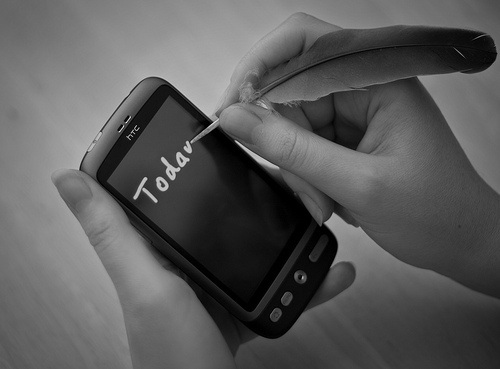With Thanksgiving this week, our U.S. fans are preparing to celebrate the holiday with friends and family. Your email inbox is full of communications you’ve typed back and forth with them just trying to figure out the plans.
But have you ever stopped to think that at the time of the first Thanksgiving, there were no keyboards?
That’s right – those devices you’re so reliant on for communication in this modern era didn’t even exist in the 1600s.
This isn’t shocking news to you, but you have to admit that you probably don’t think much about the history of keyboards and writing devices when you’re pounding away on yours. So to help you gain a better appreciation for your ability to communicate quickly and efficiently, here’s a brief glimpse into the history of writing devices in the era of the first Thanksgiving.
It All Starts With Bird Feathers…
In the early 1600s, inventors were going crazy with cool new gadgets. An Italian physicist named Evangelista Torricelli was developing the barometer, Hans Lippershey invented the first telescope, and some Dutch eyeglass makers invented the microscope.
Even though technology was developing all around these creators, their writing devices were nothing more than a quill pen and paper. All their notes were jotted down with bird feathers cut to the right shape and size that were then dipped in ink.
These and many other writers had to live with bird feather quills for many years. Typewriters weren’t invented until the early 1700s, and metal pens not until the early 1800s.
But don’t think that quills were worthless instruments; the “tech” of quill pens was pretty impressive.
There’s Power in the Pen
Quill pens dominated writing history for over 1000 years. They were generally made from primary wing feathers whenever possible because they were the strongest, especially if taken from a live animal.
Though some people believe that the left-wing feathers were desired because they didn’t block the sight-line of a left-handed writer, this is thought to be a myth as quill pens weren’t sold as “left” or “right-handed.” They were just sold by their length and type of bird feather.
Goose feathers were most common, but swan was more desirable (and more expensive) for making larger lettering. Quill users also discovered that crow’s feathers worked well in creating fine lines, followed by feathers from eagle, owl, hawk, and turkey.
No matter what type of feather you used, though, the cutting process (known as “dressing”) was lengthy. Quill users needed a special knife to cut and shape the instruments and remove the barbs. Quills also needed sharpening when they got dull.
Despite their problems, quills actually reached higher popularity in the 1600s (the time of the first Thanksgiving) because writing was starting to use less print and more calligraphy-style scripts, promoted by the “writing masters” of the day. Nowadays, you can just select a font in your word processor and type away!
It may seem silly to be thankful for your keyboard this holiday season, but it’s preferable to cutting, de-barbing, and sharpening a quill all the time, isn’t it?
Or do you sometimes wish you could write with a quill just for fun? Let us know! Shoot us a tweet @DasKeyboard or share with us on Facebook.

